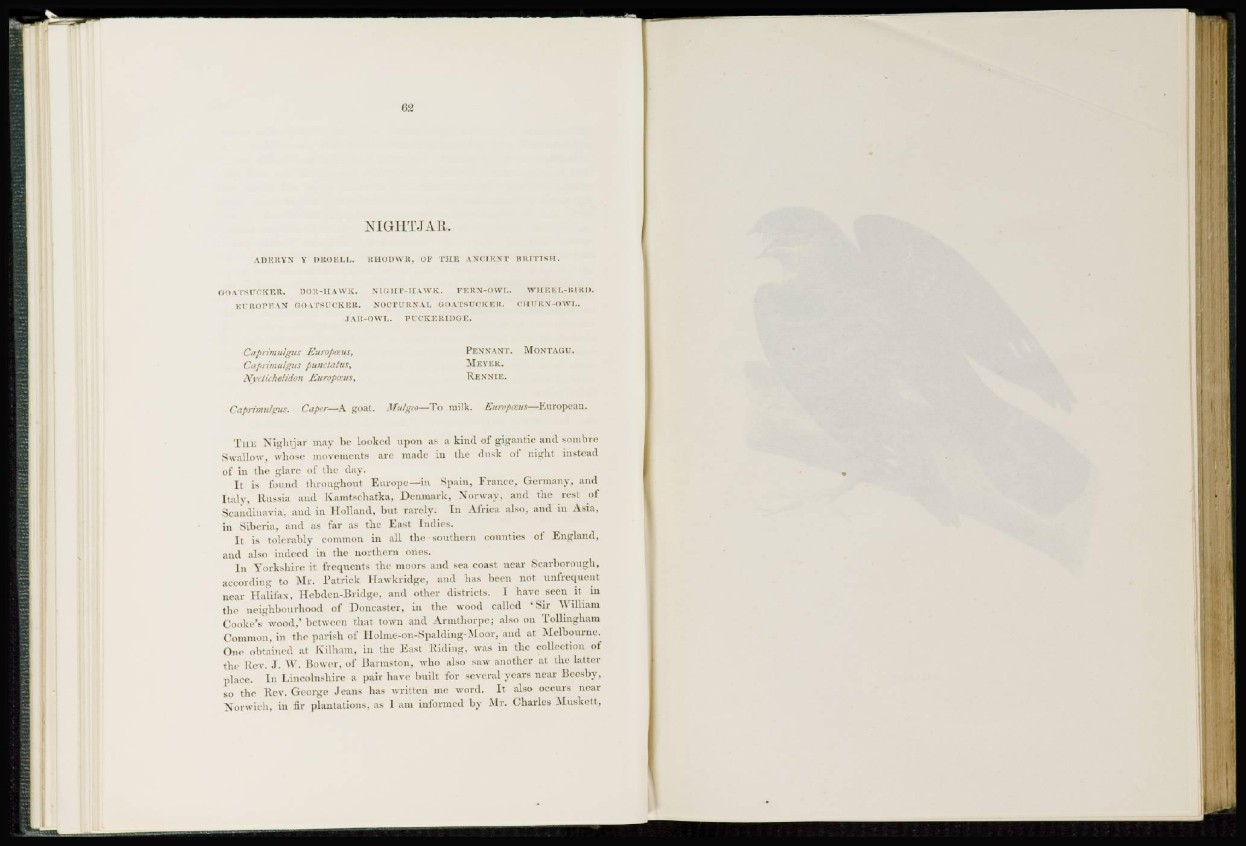
NIGHTJAR.
ADBRYN Y DROELL. RHODWR, OF THE ANCIENT BRITISH.
GO iTSUCKER. DOR-H WVK. NIGHT-H UVU. FERN-OWL. WHBEL-BI RD,
EUROPE \N CO VI'SUCKER. NOCTURN i.L GOATSUCKER. CHURN-OWL.
JAR-OWL. PUCKE RIDGE.
Caprimulgus Europaus,
Caprimulgus punctatus,
Nydichelidon Europceus,
PENNANT. MONTAGU.
AIEYEK.
RENNIE.
Caprimulgus. Caper—A goal. Mulgeo—To milk. Euro pans—European.
THE Nightjar may be looked upon as a kind of gigantic and sombre
Swallow, whose movements are made in the dusk of night instead
of in the glare of the day.
It is found throughout Europt—in Spain, France, Germany, and
Italy, Russia and Kamtschatka, Denmark, Norway, and the rest of
Scandinavia, and in Holland, but rarely. In Africa also, and in Asia,
in Siberia, and as far as the East Indies.
It is tolerably common in all the southern counties of England,
and also indeed in the northern ones.
In Yorkshire it frequents the moms and sea coast near Scarborough,
according to Mr. Patrick Hawkridge, and has been not unfrequent
near Halifax, llcbden-Bridge, and other districts. I have seen it in
the neighbourhood of Doncaster, in the wood called ' Sir William
Cooke's wood,* between that town and Armthorpe; also on Tolliugham
Common, in the parish of Holme-on-Spalding-Moor, and at Melbourne.
One obtained at Kilham, in the East Riding, was in the collection of
the Rev. J. W. Rower, of Barmston, who also saw another at the latter
place. In Lincolnshire a pair have built for several years near Bcesby,
so the Rev. George Jeans has written me word. It also occurs near
Norwich, in fir plantations, as 1 am informed by Mr. Charles Muskett,